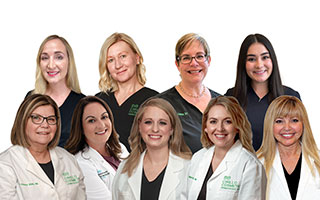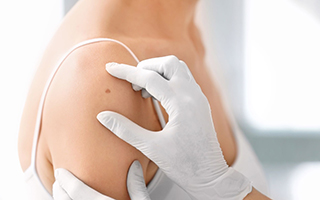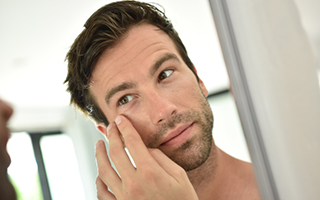Scar Revision
Surgery to Correct Severe Scarring for Bryn Mawr, Newtown Square, Philadelphia, and the Main Line
- Home
- Plastic Surgery
- Skin
- Scar Revision
Scars can result from any type of significant injury that impacts the skin, including physical trauma from accidents, burns, disease, surgery, and other causes. Sometimes, when your skin is healing, the collagen is arranged in an abnormal way, causing thick, elevated scars, discolored areas, or noticeable depressions. To address these lasting marks, surgery may be necessary. It’s important to choose a surgeon who has significant experience in surgical scar revision. Bryn Mawr, Newtown Square, and Philadelphia-area patients—as well as anyone living farther away—can choose Cirillo Center for Plastic Surgery with confidence. Our team will discuss what’s involved in the procedure with you during your consultation and help you assemble a plan designed to minimize the visible reminder of your injury.
Cirillo Center for Plastic Surgery is ready to speak with you about scar revision options. To schedule a consultation with Dr. Laura Gowen in our Bryn Mawr office, Please BOOK ONLINE, call 610.672.0500, or Contact Us.
How Does Surgical Scar Revision Work?
In general, scars from an injury, burn, or surgical intervention improve over time and become less noticeable. However, at times scars can be painful, widen, restrict movement, and be cosmetically unappealing. A wound that did heal but left an unsightly or painful scar may benefit from a scar revision.
When it comes to surgical scar revision details, it is important to understand that not all scars are the same, and some can respond better to nonsurgical solutions. Some of the most common scar types include:
Acne Scars
Severe, cystic acne breakouts often cause inflammation and damage to the inner layers of skin, leading to the formation of sunken scars when the collagen that is produced to fill them is insufficient.
Contracture Scars
Contracture scars occur after a severe burn that causes the skin to contract, creating functional problems.
Hypertrophic Scars
Hypertrophic scars result from too much collagen production at the site of the injury. They often have a thick, reddish appearance and are usually itchy and even painful. The scar tissue stays within the borders of the original scar.
Keloid Scars
Much like hypertrophic scars, keloid scars result from excess scar tissue overgrowth. These raised scars extend outside of the boundary of the injury, continue to get larger even after the skin heals.
Scar revision surgery, where appropriate, can improve the appearance and texture of the scar.

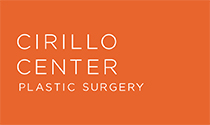
Meet Plastic Surgeon
Laura A. Gowen, M.D.
Board-certified and breast-fellowship trained plastic surgeon Laura A. Gowen, M.D., draws on her extensive experience and uses advanced techniques to create beautiful, natural results for both cosmetic and reconstructive surgery patients.

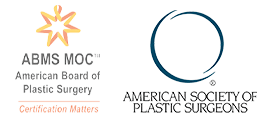
Which Techniques Are Used for Scar Revision?
The scar revision technique employed at the Cirillo Center for Plastic Surgery will depend on the type, size, severity, and location of the scar you want to address. Other factors that will be considered include your age, overall state of health, cosmetic expectations, and personal preferences.
Scar revision might involve minimizing the size of the scar, removing and relocating the scar to another area, or making the skin and scar tissue lie smoother and flatter. Sometimes various scar revision techniques will have to be used in conjunction with each other to achieve optimal results.
Surgical Scar Revision
For very large, raised scars—such as keloids or hypertrophic scars— usually a series of steroid injections is employed first to try to soften and shrink the hypertrophic or keloid scar. If the steroid injections have not flattened or decreased the size of the scar to the patient’s goal at that point Dr. Gowen will perform a scar revision.
The scar revision involves excising the unwanted scar and closing the tissue in a layered fashion so that it heals with less of a noticeable line. If you have a history of recurrent hypertrophic or keloid scars, there is chance or recurrence of thick scars.
Who is an Ideal Candidate for Scar Revision?
Patients who have highly pronounced scars that are unusual looking, wide, or long, as well as other scar-related problems that can’t be improved with alternate treatments—such as scar and stretch mark therapy—may be good candidates for scar revision with surgery.
More Cosmetic Options for Scar Revision
In addition to surgical scar revision options, there are also several nonsurgical scar revision techniques available to address more superficial, smaller scars, including dermal fillers, microneedling, microdermabrasion, and laser skin resurfacing. Dermal fillers physically add volume to the skin to make depressed or pitted scars less noticeable, while other techniques exfoliate the skin to even out its texture or trigger accelerated collagen production to make the skin sit flatter and smoother.
Cirillo Center for Plastic Surgery is ready to speak with you about scar revision options. To schedule a consultation with Dr. Laura Gowen in our Bryn Mawr office, Please BOOK ONLINE, call 610.672.0500, or Contact Us.


